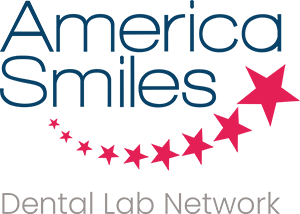In the fast-paced world of digital dentistry, outdated equipment does more than slow down production—it quietly erodes profitability, efficiency, and client satisfaction. While replacing major equipment like mills, ovens, or scanners can feel like a heavy investment, keeping older machines too long may cost even more in the long term. Here’s a closer look at how aging equipment impacts your lab—and a practical framework for planning your next upgrade.
The Cost of Standing Still
Outdated technology can hinder nearly every aspect of lab performance. Here are four ways old equipment can compromise your bottom line:
Production Speed & Downtime: Aging machines are more likely to break down or run slower, leading to delays in case delivery. Repair timelines can be lengthy, creating workflow bottlenecks and forcing your team to work overtime to catch up.
Energy Inefficiency: Older machines often consume significantly more power than modern alternatives. Over time, these added utility costs chip away at profits, especially for high-volume labs.
Precision & Quality Control: As components wear down or software becomes obsolete, it’s harder to maintain accuracy. This leads to increased remakes, inconsistent results, and potential damage to your lab’s reputation.
Staff Morale & Productivity: Technicians frustrated by unreliable tools may spend more time troubleshooting than fabricating. Repeated issues can lead to dissatisfaction, burnout, and turnover.
Total Cost of Ownership vs. Replacement Value
When debating repair vs. replacement, consider total cost of ownership (TCO) rather than focusing solely on the purchase price. To assess your current equipment:
-
Add up your repair and maintenance costs over the last 12–18 months.
-
Evaluate production disruptions and delays tied to equipment issues.
-
Consider the availability and cost of replacement parts.
-
Assess whether precision or case quality has declined.
If your repair costs exceed half the price of a new unit or your current equipment is regularly disrupting production, replacement is likely a smarter financial decision.
How to Plan for an Equipment Upgrade
You don’t need to overhaul your entire lab at once. Instead, take a phased, strategic approach:
-
Budgeting Smartly: Allocate a portion of your annual budget toward capital improvements. Forecast upgrade needs 1–3 years out and plan accordingly.
-
Financing Options: Many vendors and lenders offer financing or leasing options. Monthly payments may help you preserve cash flow while gaining access to upgraded equipment now.
-
Timing Purchases Strategically: Trade shows and vendor promotions often include discounted pricing, bundled software, and extras like installation or training. Schedule upgrades around these events for maximum value.
-
Evaluating Workflow Needs: Talk to your team before purchasing. Understanding what features would improve efficiency or quality helps ensure your investment solves real workflow problems.
Future-Proofing Your Lab
Upgrading lab equipment is ultimately an investment in quality, reliability, and competitiveness. By planning purchases thoughtfully, labs can reduce long-term costs, boost team productivity, and improve client satisfaction.
At AmericaSmiles, we help labs evaluate equipment needs and access exclusive discounts, financing, and vendor support. Whether you’re considering a new scanner, mill, or furnace, we’re here to guide you through options that fit your lab’s goals and budget.
Ready to upgrade? Contact the AmericaSmiles team today to get started.



